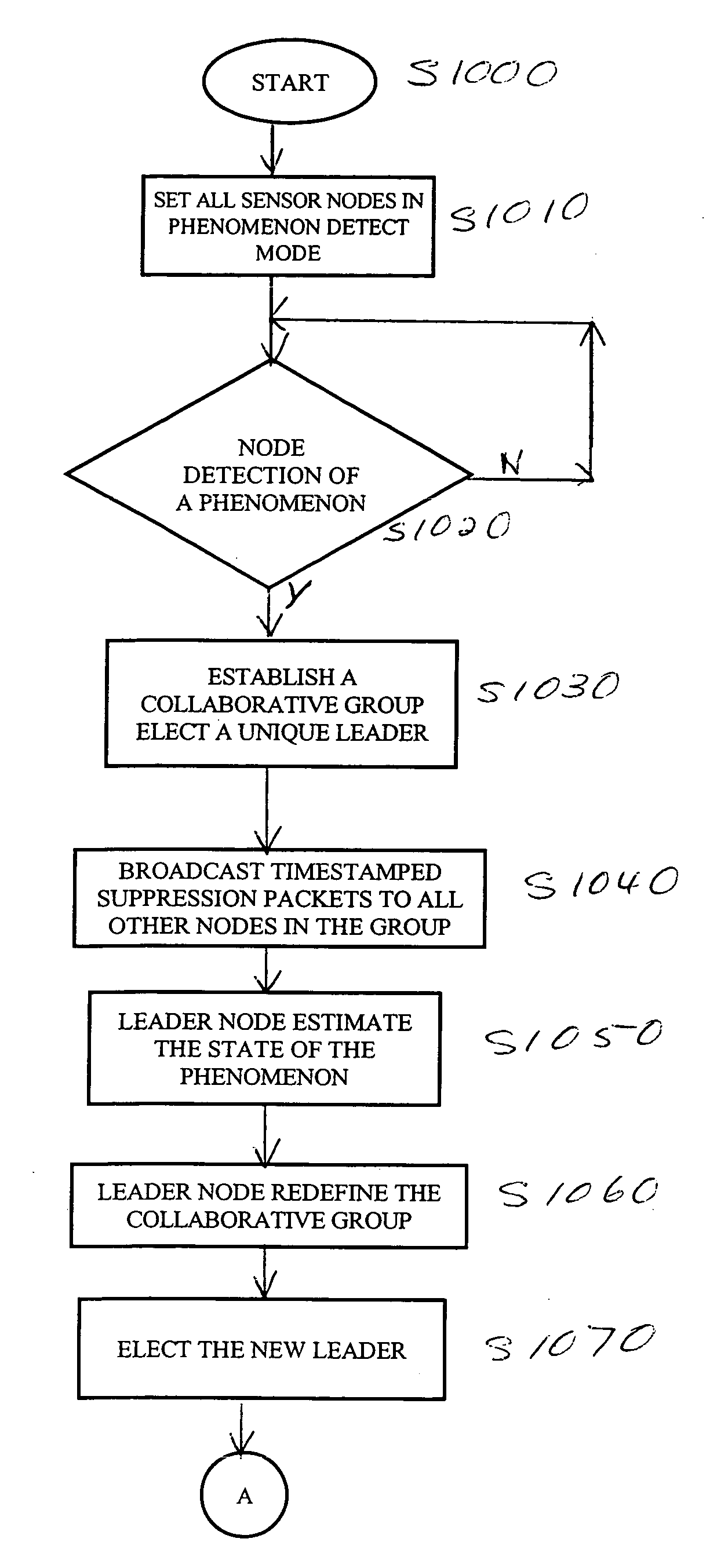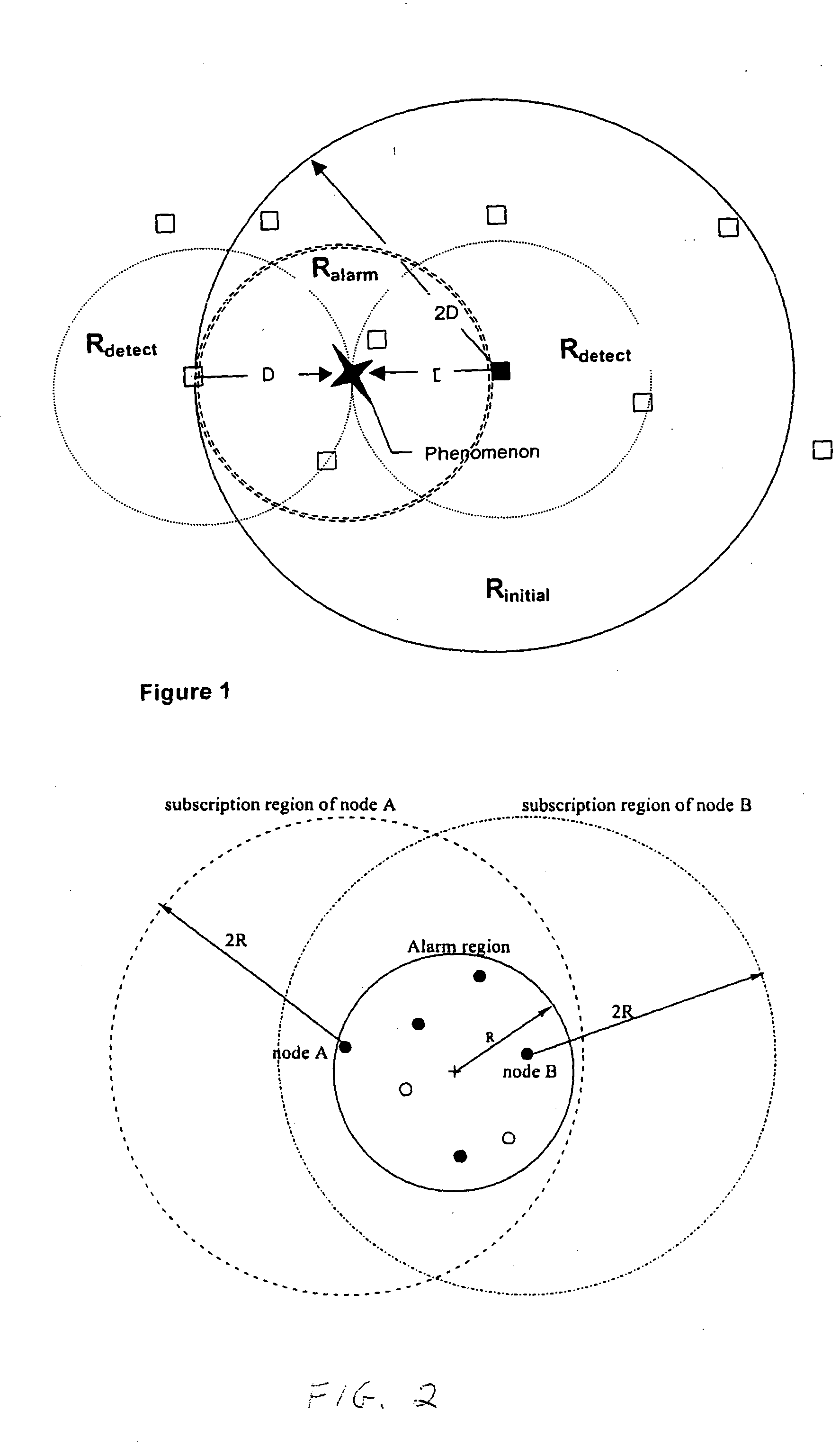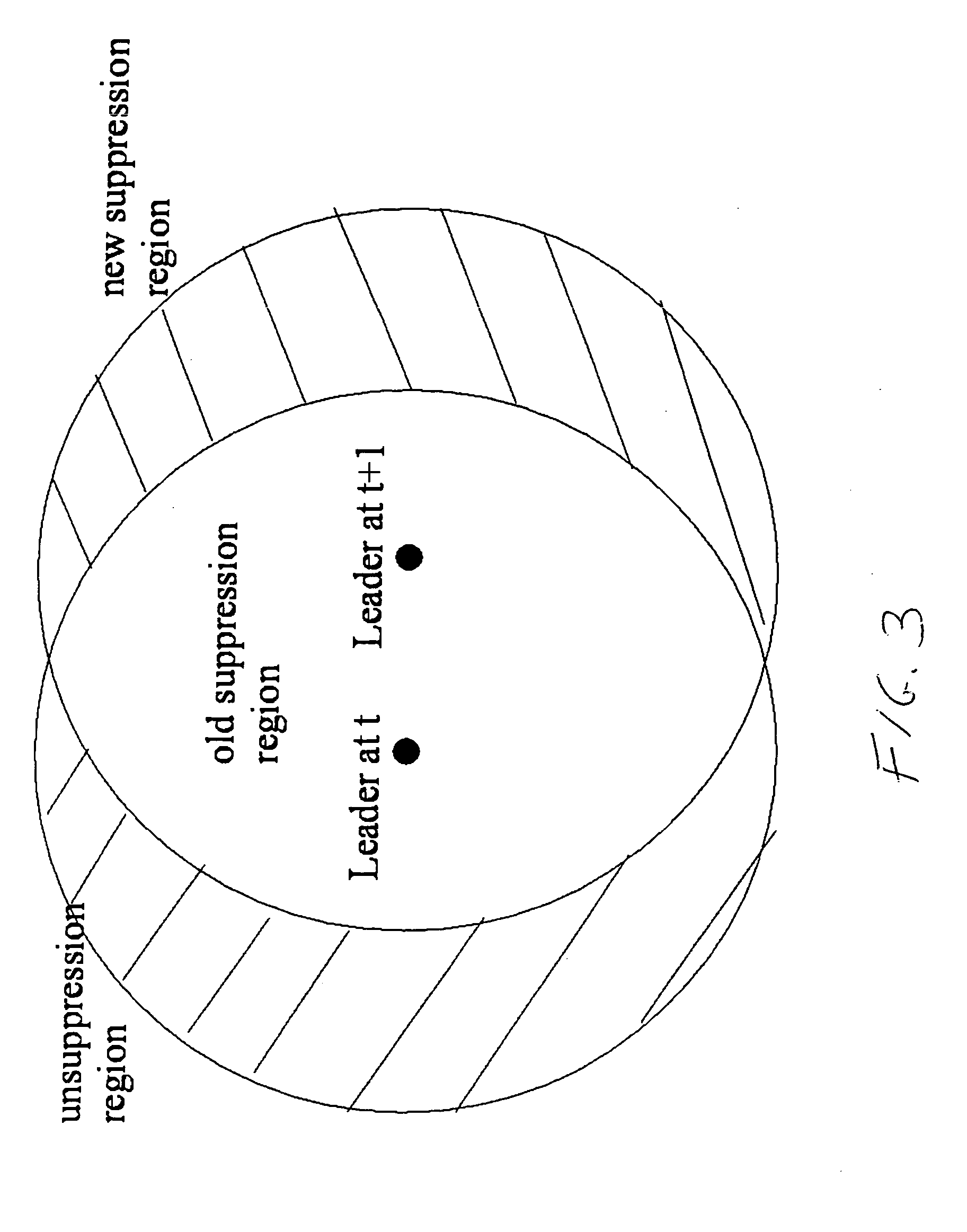Systems and methods for distributed group formation and maintenance in geographically based networks
a technology of distributed group and network, applied in the field of distributed applications, can solve problems such as system failure, complex multi-layered overlapping regions that cannot be easily integrated, and group of active nodes to vary according to the group, so as to achieve the effect of reducing distance measurements
- Summary
- Abstract
- Description
- Claims
- Application Information
AI Technical Summary
Benefits of technology
Problems solved by technology
Method used
Image
Examples
Embodiment Construction
Various exemplary embodiments of the systems and methods according to this invention assume that each sensor node in the network has the ability to detect new phenomenon and is capable of receiving messages sent to it as well as sending messages to all nodes within a geographic region specified by a bullion function or with the coordinates of nodes within this region. These coordinates may be a tuple of continuous or discrete values. A “tuple” is conventionally defined as an ordered set of values.
According to various exemplary embodiments of the systems and methods of this invention, a model exists for each sensor node that defines three regions. A first region, labeled RDETECT, is a geographical region containing all locations where a target phenomenon can be detected by a particular sensor node. This geographical region is typically conservative and includes even low probability locations. A second region, labeled RINITIAL, is a geographical region containing all other sensor n...
PUM
 Login to View More
Login to View More Abstract
Description
Claims
Application Information
 Login to View More
Login to View More - R&D
- Intellectual Property
- Life Sciences
- Materials
- Tech Scout
- Unparalleled Data Quality
- Higher Quality Content
- 60% Fewer Hallucinations
Browse by: Latest US Patents, China's latest patents, Technical Efficacy Thesaurus, Application Domain, Technology Topic, Popular Technical Reports.
© 2025 PatSnap. All rights reserved.Legal|Privacy policy|Modern Slavery Act Transparency Statement|Sitemap|About US| Contact US: help@patsnap.com



